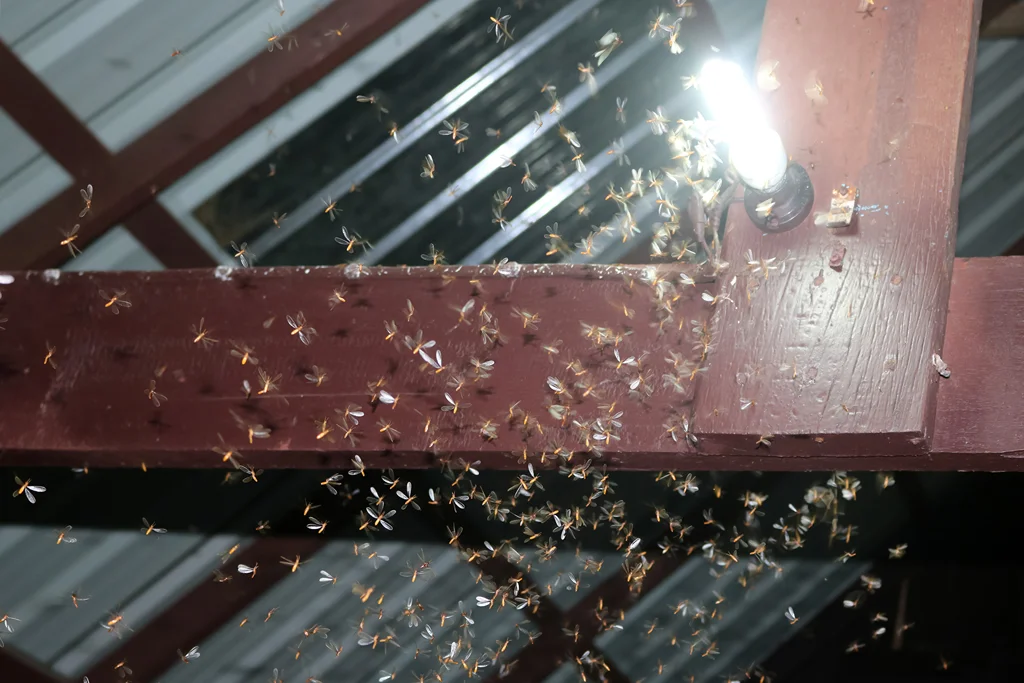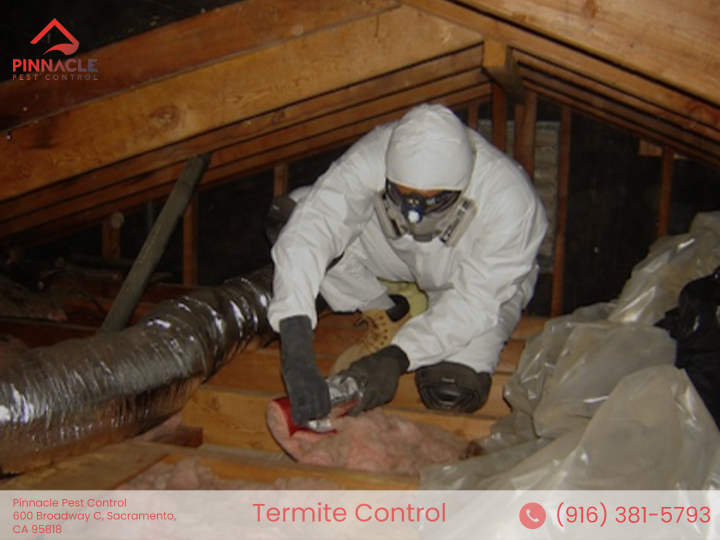Flying termites near or inside your home should serve as a warning sign for two possible threats: You might have a termite infestation already, or you could be on the verge of getting one. Termites could infest your home and once they land on solid ground and find a good spot to create a new colony and their offspring then cause structural damage. Two common types of termites include flying termites and subterranean termites.
So what’s the difference between flying and subterranean termites? Either one can be a silent destroyer of your house, causing hundreds of dollars in damage. However, flying termites are simply a subset of the termite colony that is typically a sign of a termite infestation. Being able to spot signs of termites from these two common types can solve headaches and fortunes in the future.
It has never been easier to ensure you never have to deal with any kind of pest in your home again, when you call Pinnacle Pest Control. Our pest control professionals can make your home invaders a thing of the past. Book your appointment today.
All termites have wings but not all species of termites have the ability to fly. Termites, unlike wasps and/or mosquitoes, do not belong in the flying insect group since only a tiny percentage of termites can fly and only for a brief time before losing their wings. Castes divide a termite colony. In the colony, each caste serves a certain purpose. A termite colony's castes are as follows:
Termites swarm or fly for a variety of reasons. The termite life cycle begins with termites swarming to reproduce and establish new colonies. Termites that have reached sexual maturity leave their nests and take to the air during this time. Other insects, such as ants, also engage in nuptial flight. The flying termites will cluster in the air (swarms) after leaving their nest and mate with termites from other colonies of the same species. The termites will settle, drop their wings, and begin the process of forming a new colony if they have successfully mated.
Subterranean termites, more than any other type of termite, may do the most termite damage. To reach food sources and defend themselves from the outside air, these termites construct characteristic tunnels known as "mud tubes."
They devour wood 24 hours a day, seven days a week, biting off little chunks of wood one at a time using their saw-toothed teeth. Subterranean termites may wreak havoc on a building's structure over time, leading to its eventual collapse.
Flying termites are distinguished from other flying insects by their appearance, which may be determined by a detailed examination. Depending on the species, flying termites can have a variety of colors. Flying termites are often the same color as the other termite castes, being beige/tan in color.
They feature two antennae that are frequently straight with a small curvature, as well as two sets of equal-length white and translucent wings with veins. Flying termites are typically 1/4 to 3/8 inch long and can be light, dark brown, or black in color.
Subterranean worker termites are around 14 inches long or less and have a cream-colored body with a straight waist. They have short jaws that aid in the chewing of wood and the movement of materials. The huge mandibles of soldiers differentiate them. Their heads are rectangular, and their bodies are flat and broad.

When mature colonies generate winged reproductive termites, a high percentage of them will fly out from the colony. As the swarming termites fly towards a light source, the swarm will persist between 30 and 40 minutes. Swarmers only fly a short distance from their nest with their wings.
They will break off their wings and never fly again after they have found a suitable location to start a new colony. They will also dig a hole in the ground and establish a colony there, becoming the ever pesky subterranean termite. If they can’t locate soil within a few hours, they will die from dehydration.
A winged termite can be the queen or king of a colony, and under ideal climatic circumstances, a queen termite can live for over a decade, breeding thousands of termites every day.
Termites are attracted to heavy rains and warm, humid conditions. If you reside in a cold climate, the warmth of your home's interior might attract termite colonies, making it ideal real estate for flying termites to reproduce and establish a colony.
Due to congestion or a lack of food, established colonies generate flying termites that will flee the nest in search of a source. A swarm of flying termites with wings near your home might indicate that there is a huge colony in or near your property that is trying to spread.
Flying termite swarms can be difficult to identify since they are frequently moving around to different termite colonies. So keep a watch out for mounds of lost wings, which indicate that mature termites have abandoned their nest to form a new colony nearby. Termite fecal matter, commonly known as frass, may be seen about the house if there’s an infestation.
Since flying termites make up such a small fraction of all termites, the most effective strategy to eliminate them is to eradicate the whole colony. Termite treatment options include: Baiting for termites and termite treatment with liquid pesticides.
If you observe a swarm, respond quickly by utilizing natural treatments or contacting an expert for a termite inspection. After you've gotten rid of these pests, ensure taking precautions to avoid another infestation.

Detecting termite infestations requires certain sets of skills and the right kinds of treatment plans to ensure full extermination and prevention of reinfestation. Pinnacle Pest Control’s professional pest control team does just these and more.
Our highly-skilled pest management team makes sure to use only the right tools, the most precise methods, and accurate techniques to prevent and stop infestations of all kinds of pests and insects. Pinnacle Pest Control offers services to help you get back your peace of mind and let you live in a clean, safe, and pest-free space. Contact us today at 916-381-5793 to receive a free quote.
No matter what kind of pest problem you’re dealing with, you can count on Pinnacle Pest Control to provide top-notch pest extermination services. With decades of experience under our name, we have already helped hundreds of residents and business owners in Sacramento eliminate pests in their property and keep them away for good.
